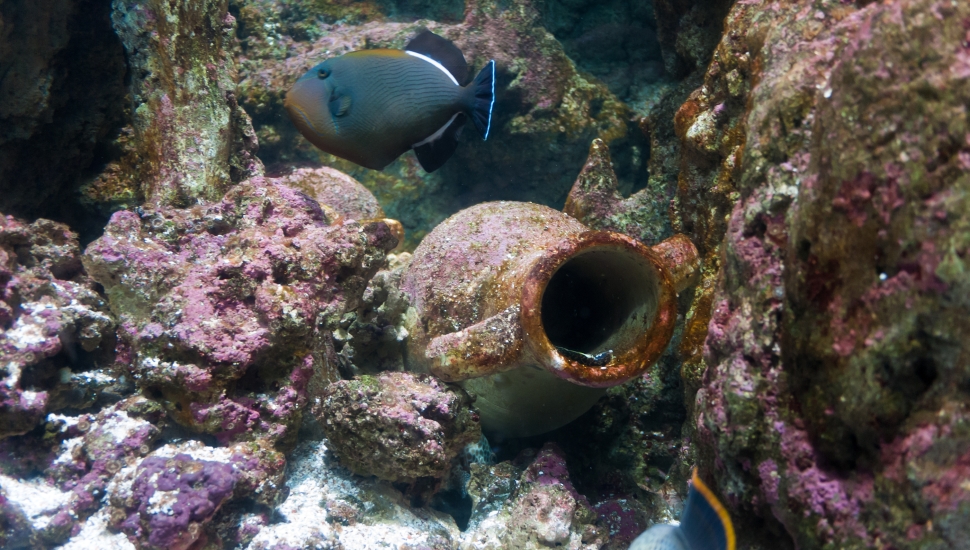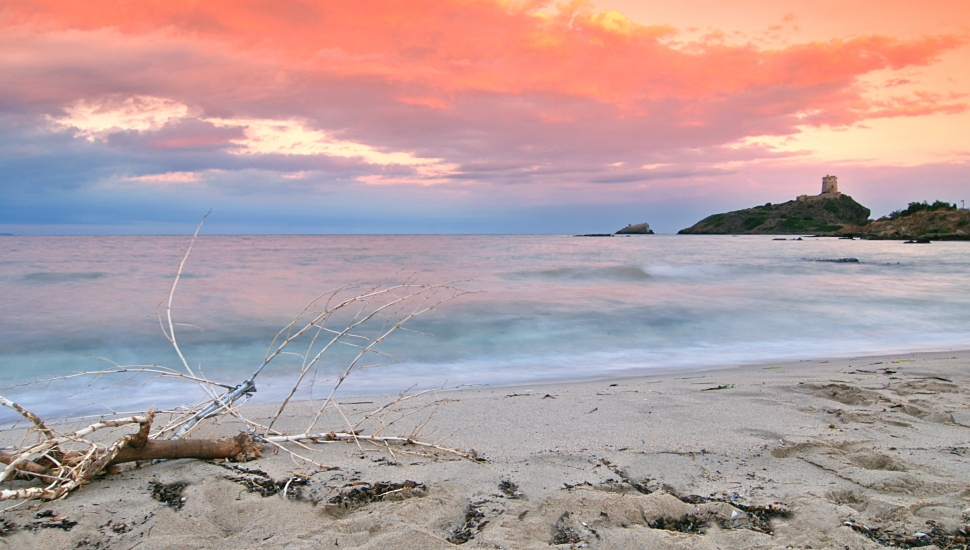Exploring Submerged Roman Ruins in Nora, Sardinia
Patrick Gough dives off the shores of Nora, Sardinia, and discovers that much more of this ancient Roman site lies beneath the waves than above it.
Standing in the ancient coastal settlement of Nora in southern Sardinia, it's easy to picture how the town looked in Roman times. The well-preserved theatre, Temple of Aesculapius and Terme A Mare are all wonderfully evocative of those long-ago days.
West of Nora's main junction is a Roman Road, running arrow-straight until its sudden disappearance by the water's edge. It gives the impression that there was once a road extending right out into the bay – an impression that was born out in the Sixties when the Mensura Diving Team carried out an underwater survey of the spot.
In fact they found two sunken roads running roughly parallel, which themselves abruptly disappeared where the water depth plunged from 10ft to 40ft. This marked the edge of the old harbour – Porto Nord Occidentale – now unequivocally underwater.
This port, together with two other submerged harbours, tell us that the entire peninsula of Capo di Pula would have been three times the size in the Roman era.

Exploring the northern edge of the headland, away from the tourists who have come to see above-water Nora, I peer into the Tyrhennian Sea and spy another sunken road, four feet below the surface. These Roman slabs mark out a straight road that eventually stops at the foot of a cliff.
How could a road simply stop in this way?
A whole tract of the peninsula appears to have dropped by about 15 feet at some point in either the Punic or Roman times, resulting in a very broken road. The shore is also thought to have risen, further submerging Porto Nord Orientale.
Since no tsunami or earthquake was ever recorded in this period, it is believed that the land slipped gradually along a geographical fault, assisted by coastal erosion.
Because two other ports suffered the same fate, there are vast tracts of submerged Nora to explore - much more than what lies above land.
Permission to dive on the site is held by the Pula Diving Centre, which has an arrangement with the upmarket Forte Village Resort Sardinia – whose draws include spa treatments, water sports and Michelin-star cuisine.
Snorkel trips can be arranged from Forte Village Beach, permitting glimpses of the underwater road.

I, however, embarked on a scuba diving trip in order to plunge the 40ft required to see the old Roman port.
I dropped backwards into the sea from the dive boat and after the bubbles cleared I espied large patches of sea grasses, punctuated with expanses of sand.
A hulk of black reef rock, similar to others I had explored in the Mediterranean, loomed out of the murk. However, as we moved along it I realised it was perfectly rectilinear; they were the breakwater walls of the old port. At the foot of these blocks were ceramic containers once used to transport grain or wine.
Our dive guide beckoned our group west, until we paused and settled on the seabed. He then brushed a patch of sand to reveal the smooth and unmistakeable pattern of marble. This was part of the floor of the old Roman quayside, now padded in silt and grasses.
The hidden nature of this ancient floor seemed to bring history to life in a way that above-sea Nora didn't. Here, underwater, the ghosts of the past seemed to be palpable. Despite plenty of looting over the years, it still evokes a long-gone Roman past.
However, these extraordinary underwater sites don't mean the established sites of Nora aren't alluring – they certainly are. But if you have a diving licence – or even if you enjoy snorkelling – give underwater Nora a try.
Get a Quote